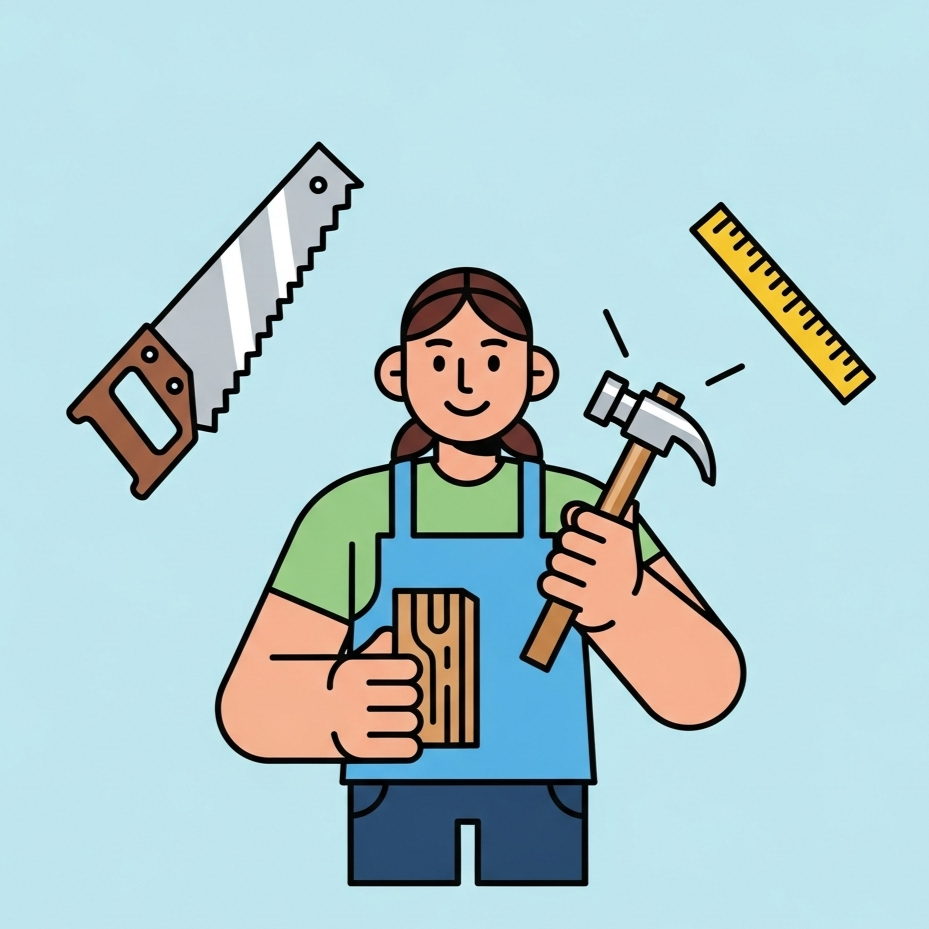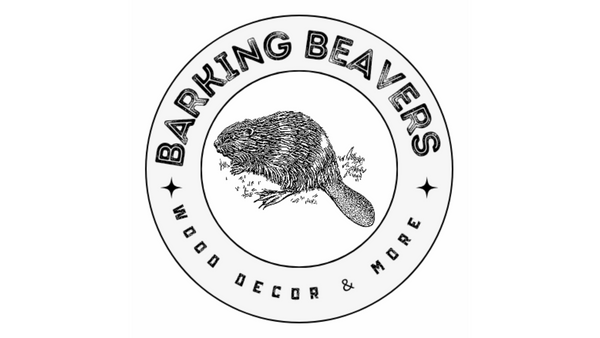
Woodworking Home Improvement for Beginners
Share
Have you ever walked through a hardware store and felt completely overwhelmed? Or maybe you've scrolled through Pinterest, dreaming of beautiful custom shelves or a unique piece of furniture, and thought, "I could never build that."
I'm here to tell you that you absolutely can. And you don't need a huge workshop or a thousand-dollar tool budget to get started.
Home Improvement Woodworking Plans
Our mission with Barking Beavers, and with this blog specifically, is to show you that a few basic woodworking skills can be your secret weapon for transforming your home, while giving you a sense of satisfaction only building or fixing something can do. Think of it less as "woodworking" and more as "home improvement with a personal touch."
So, where do you begin? Let's break down the essential skills you'll need and how they can immediately improve your space.
Skill #1: Making a Straight Cut
This is the absolute foundation of all woodworking. Whether you're building a shelf, repairing a broken door frame, or cutting a piece of trim, your project lives or dies by the straightness of your cuts.
How to get started: You don't need a fancy table saw. Start with a simple hand saw and a good guide. A piece of scrap wood, a Speed Square, or even a straight-edged ruler can serve as a guide. Mark your line, clamp your guide to the board, and let the saw follow the edge.
Home Improvement Application:
- Custom shelving: Cut boards to the perfect length for a laundry room or pantry shelf.
- Framing a mirror: Cut pieces of molding at 45-degree angles to create a beautiful, custom frame.
- Repairing baseboards: If a section of trim is damaged, you can easily cut a new piece to fit perfectly.
Skill #2: Accurately Measuring and Marking
Woodworking is often described as "measure twice, cut once." This isn't just a catchy phrase—it's the golden rule. An extra 30 seconds spent on a precise measurement can save you from an hour of frustration and a wasted piece of wood.
How to get started: All you need is a reliable tape measure and a pencil. Don't be afraid to double-check your numbers. When you mark your cut line, make a small "V" to indicate exactly where the blade should go, so there's no confusion.
Home Improvement Application:
- Installing a curtain rod: Measure the exact midpoint of your window for a perfectly centered rod.
- Picture hanging: Measure the distance between pictures to create a perfectly balanced gallery wall.
- Building a simple shoe rack: Measure the height of your shoes and the width of your space to design a rack that fits just right.
Skill #3: Using a Drill
The drill is perhaps the most versatile and essential tool for any home DIYer. It’s used to make holes, drive screws, and assemble everything from furniture to shelves. Getting comfortable with a drill is a huge confidence booster.
How to get started: Practice on some scrap wood. Get a feel for the different settings—drills have a "driver" mode for screws and a "drill" mode for drilling holes. Start with a low speed and work your way up. Learn how to choose the right drill bit for the job (they're labeled for wood, metal, etc.).
Home Improvement Application:
- Hanging shelves: Drill pilot holes to prevent wood from splitting before screwing in your shelf brackets.
- Assembling flat-pack furniture: Use your drill/driver to speed up the process and ensure a tighter fit than a hand screwdriver.
- Mounting a TV: A drill is essential for securely attaching a TV mount to the wall studs.
Your First Project: The Ultimate Entry-Level Project
So, with these three skills, what's a great project to start with? Forget the complex coffee table. Let's make something simple and instantly useful: a floating shelf. Or check out these Simple Woodworking Projects
This project uses all three of our beginner skills:
- Measure and Mark: You'll measure the length of your shelf and mark where to cut it. You'll also measure on your wall to find the perfect placement.
- Make a Straight Cut: You'll cut your board to the precise length you need.
- Use a Drill: You'll use your drill to mount the support brackets securely to the wall.
You can find a simple, step-by-step tutorial for a floating shelf anywhere online. The best part? You'll have a tangible, beautiful piece of home decor that you can proudly say you made yourself.
Ready to Start?
Don't let the idea of "woodworking" intimidate you. Start small, master these three foundational skills, and you'll soon discover that your home improvement dreams are well within your reach. Grab a tape measure, a pencil, and a piece of wood, and let's get building!
But you may wondering what to build first. We've got you covered with simple, skill-building and beginner-friendly woodworking plans for your next home improvement project right here: Woodworking Plans for Beginners

1 comment
I’m trying fix some things around the house I just bought in August and these new skills are very necessary. Love the plans thank you